This is a Version B-3 PCB produced in 1986. This motherboard is the predecessor of the later Version E short boards. The biggest difference from the older long boards is the use of two 32 kByte RAM chips (41464) instead of eight 8 kByte RAM IC’s. The Assy 250466 motherboard came with the highly acclaimed MOS 6569R5 VIC-II chip and the enhanced SID chip (MOS 6581R4AR) with ‘Advanced Resonance’.
The inside of the machine:
All electrolytic capacitors and voltage regulators have been exchanged with new ones as described in the C64 Capacitor Mod (link).
The machine has the highly acclaimed VIC-II chip (MOS 6569R5) with very few artifacts (vertical lines and checkerboard pattern artifacts). It also has the SID chip called MOS 6581R4AR for ‘Advanced Resonance’ at U18. The two RAM chips with 32 kByte RAM eash located at U9 and U10.
All major chips were made in 1986 including the CIA chips (MOS 6526 at U1 & U2) and the PLA chip (MOS 906114-01 at U17)…
Capacitor C38 (51 pF) has been replaced by a 4.7 nF one to make the RESTORE key work like all the other keys as described in the C64 RESTORE Key Mod (link).
The machine came with a metal shield which functions as a heatsink for all the major chips.
The outside of the case:
Notice the label does not say ‘C64C’ eventhough the cases are identical.
The keyboard is, in lack of a better phrase, the ‘Old Style Commodore 64C’ version with prints on the front of the keys like on the breadboxes (but the plastic is white instead of greyish/brownish).
The original cardboard box the machine came in:
The power LED color is red.
© breadbox64.com 2016

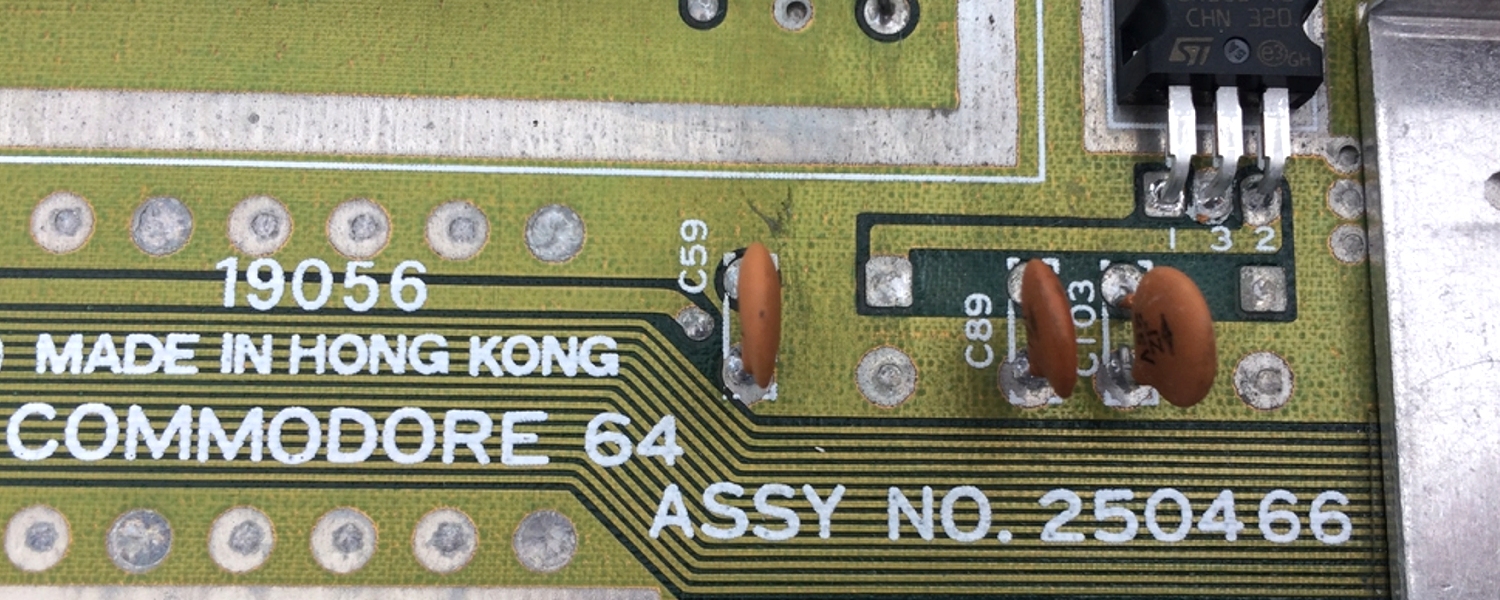
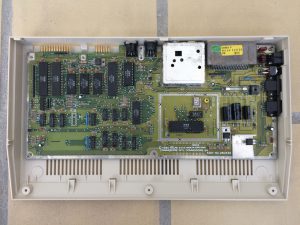
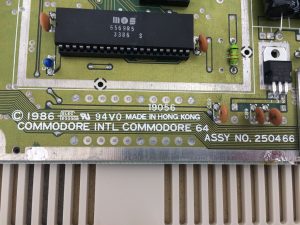
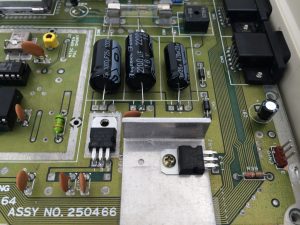
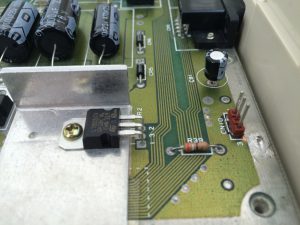
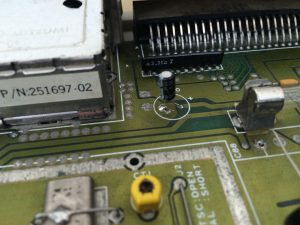
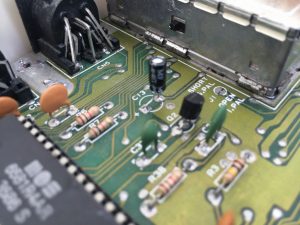
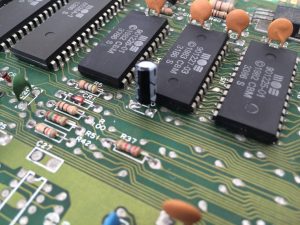
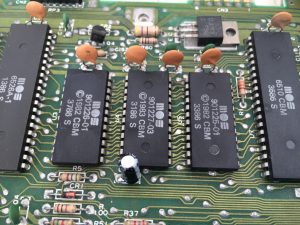
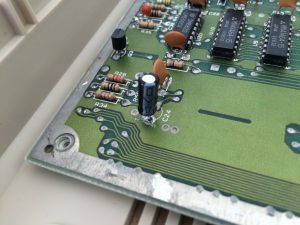
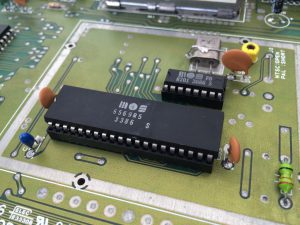
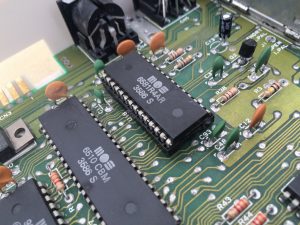
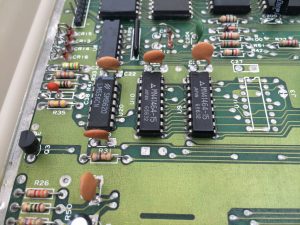
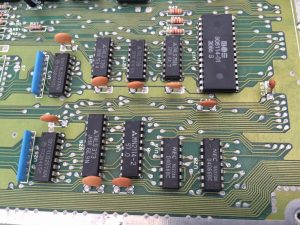
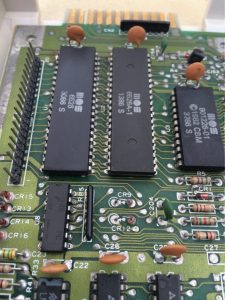
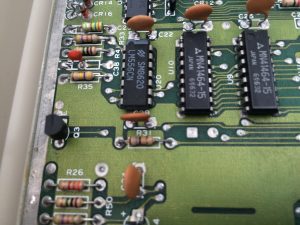
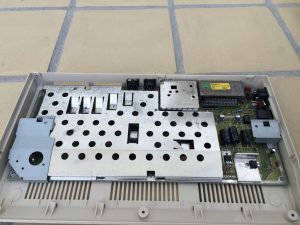
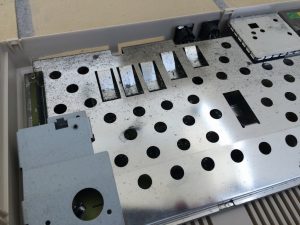
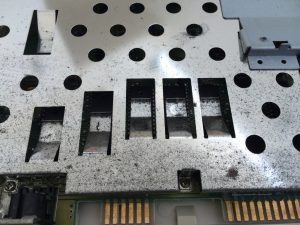
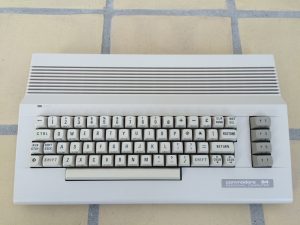
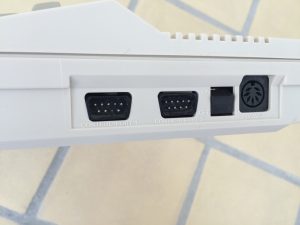
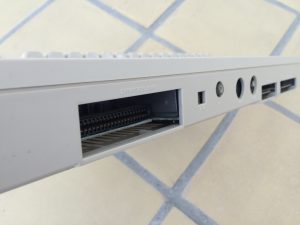
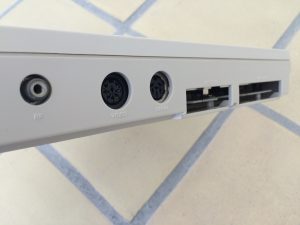
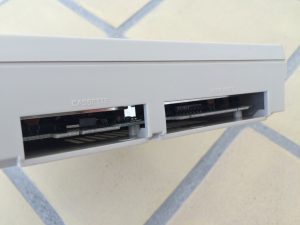
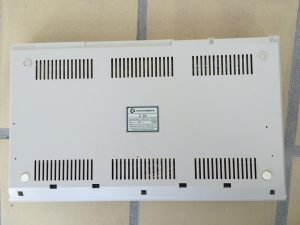
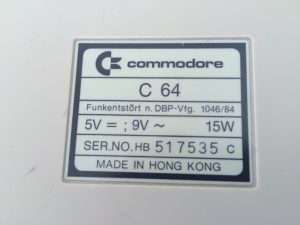

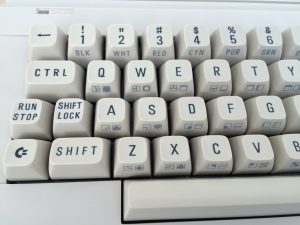
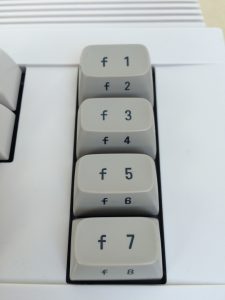
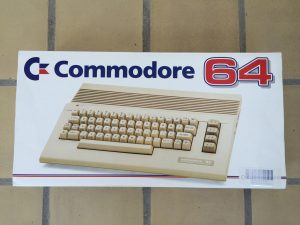
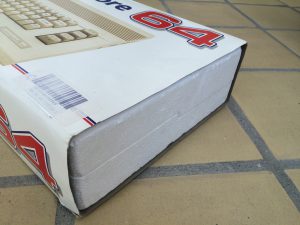
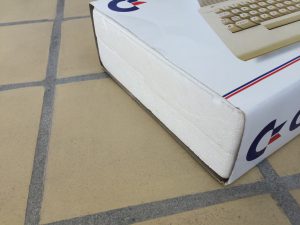
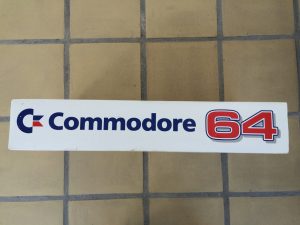
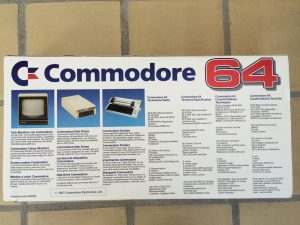
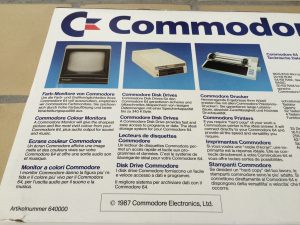
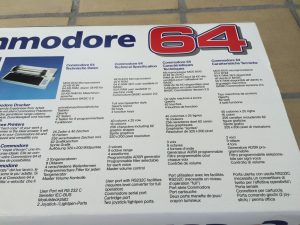
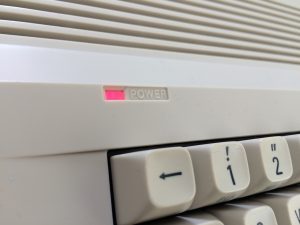
Hi, I saw this picture of the packaging (link), where it says 8510 CPU while the board (Assy 250466) has a 6510 installed. I would like to know why there is this discrepancy?
Hi Natale, good question! I had to double check to spot the discprepancy ? I have never heard of an 8510 MPU chip being produced by Commodore nor have I ever seen one. So I believe it is a typo and the correct microprocessor should have been MOS 8500 or MOS 6510.
Regarding the ‘wrong’ MPU, I guess Commodore had the cardboard boxes made for the new styled cases (the beige ones) and didn’t care too much about what specific hardware were actually inside the machines as long as the cases looked (almost) like the picture on the box. This is truly another example of Commodore’s approach of ‘Let’s see what we have in store today and let’s make some machines with it…’. The Assy 250466 long board with the 6510 MPU inside a new styled case, is a great example of this approach.
Another difference between the box and the actual machine is the printing on the keyboard. The cardbox picture has some of the prints on the front of the keys, like on the old breadbox (and the machine presented on this page). In the later version of the keyboard, the prints have been been moved to the top of the keys, but the picture on the cardboard box has not been updated.
Hey I’m wondering what c210 and c211 are because my commodore 64c is missing those two…
C210 is an electrolytic 10uF 25v radial capacitor and C211 is a ceramic 1uF 50v capacitor. Hope you get it up and running ?
Howdy, Which power supply come with the PAL C64C 250466.
The machine came with a standard beige PSU (Part No. 251053-11). However, can’t really say if that hasn’t been swapped over the years before I received it from a guy in Germany.
Hi MtnBuffallo, I own 3 similar C64C (with 250466), and two of them were supplied with beige old style Ismet PSU so I think it was a standard approach (third one was purchased by me without any PSU). At least it seems to be for european market…
Hello all. I was given this revision board (250466, B-3) as a gift but I noticed it’s missing the VIC and SID chips. I’ve been told the board is in fact in full working order. I’m in the UK but I don’t know if this matters or not. I’d quite like to find all the parts and eventually get it up and running. Does anyone know where I could get the missing chips without having to sell my kidneys? Much appreciated!
Hi Eddie, you can find the missing chips on Ebay or from Retroleum Spare Parts in the UK (link). You need a MOS 6581 SID chip and a MOS 6569 VIC-II chip 🙂 Good luck with the project!
Thank you so much!!!
I have this board version inside an old-style brownish-grey breadbox case. I am surprised to see your site state that it supposedly came in the slim white case like the C128. I bought this machine off eBay. It came in a C64 box (for the old style case), and the serial numbers match between the box and the computer’s case bottom sticker, but that doesn’t mean the board inside the case was the board the box/case originally shipped with from Commodore. Someone might have modified or built this from parts.
Currently, this machine will not start with any SID chip installed (it came with the one you have listed on this site). It WILL start with no SID. The three SIDs I tried all test as functional (so far as I can get sound from all three voices on them with the Prophet64 cartridge installed in another working C64 board). I cannot figure out why this particular C64 will not work with a SID installed. Sadly, none of the other chips typically responsible for failures can be replaced without desoldering and installing sockets. Almost everything is soldered into the board and I lack a desoldering station (and the skills).
Hi Jace, I’ve seen Assy 250466 boards installed in both brown/grey breadboxes and the beige slim C64C cases. So it might be the original board you have installed and not a modification 🙂
Regarding your SID issue, it sounds like something is being shorted when you insert the IC. Have you visually inspected the SID socket (on both sides) and tested it with a multimeter? It may be something as simple as a broken trace which cause the ‘black screen of death’.
Oh, good to know this C64 might be original parts. Thanks MtnBuffalo 🙂
The SID’s socket looks fine from the top, as does the board all around it. I would have to unsolder and remove the bottom metal RF shield and cardboard to examine the board’s bottom. I’m not inclined yet to go through that effort, especially without any sign of damage on the top of the board… and without proper tools. I’ve considered that another possibility is a damaged/defective PLA (?) chip, but don’t know how to test for that. Piggyback another PLA on top of it? I tried piggybacking on another black-screen C64 and it provided no clues to the problems on that one. Probably not a very useful technique.
I DO have a multimeter. What would I look for with a multimeter?
I have a bunch of C64 machines, so it’s not critical to fix THIS one right now. It’s just sad that it’s the one in the best cosmetic condition, but wont work with a SID installed.
Hmm… I suppose I could just examine my working C64 with my multimeter, and compare the voltages between the two boards. Maybe just with the socket empty?
I saw someone testing C64 bits with the red lead just plunked against the metal frame of the RF converter or the cartridge shield. That’s just finding a grounding spot, right?
Sigh. Dyslexia. I meant the black lead on ground.
Hi Jace, If there is a broken trace somewhere, you’ll need to use the continuity test function on your multimeter. That will probably be more efficient if you remove the back shield. This will also make a visual inspection easier 🙂 However, the black screen could also be related to something else. Check out Ray’s list of C64 chips and common symptoms here: link. Good luck with the repair 🙂
Do you have, or know where I could download the schematics for the 250466 motherboard. Thank you.
Hi Anna, You should be able to find the schematics here: (link) 🙂
What PLA is used on this board? I am building a SixtyClone version of this board, and I am having issues tracking it down since not all PLA replacements work in all boards.
Hi Robert, I’ve populated a SixtyClone Assy 250466 board (link) some time back using a PLAdvanced+ PLA (link). I would think that most replacement PLA’s will work wihout any issues on that specific board including the EPROM based versions. You can read more about the PLA’s here (link).
Good luck with the project 🙂
Hi, i am Roberto from Italy. I found a C64G with the 250466 main board. The warranty seal is still present and not broken so i think the machine never was open.
Thanks for the info. I have a 250466 and it is almost as described here. However it has a cardboard shield, not the metal one that act as a heat sink. Was this common ?
Hi Tommy, I think it would be safe to assume that Commodore used whatever parts they had on the shelf when assembling the machines. I would therefore not be surprised if they used either the metal one I have or the cardbox version your machine has. The cardbox RF shield is definately a heat trap, so I would remove it if I was you 🙂